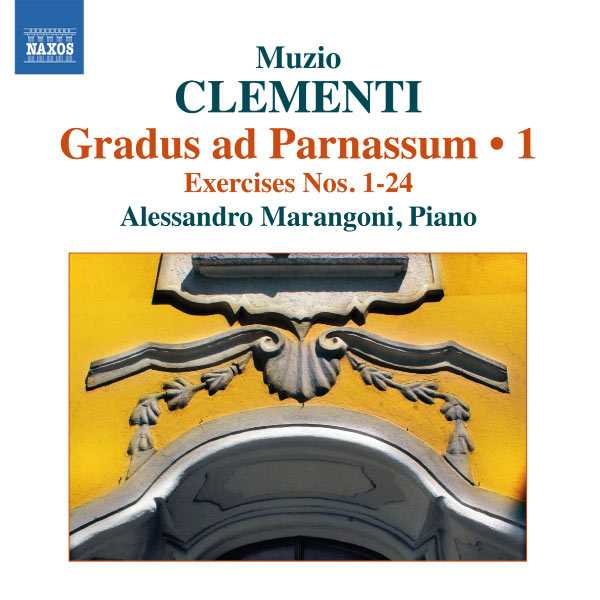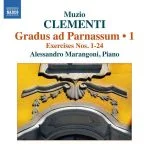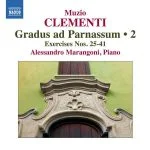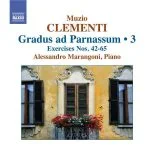
Composer: Muzio Clementi
Performer: Alessandro Marangoni
Format: FLAC (tracks)
Label: Naxos
Catalogue: 8572325
Release: 2010
Size: 229 MB
Recovery: +3%
Scan: yes
Gradus ad Parnassum, Op. 44
01. No. 1. Con velocita
02. No. 2. Allegrissimo
03. No. 3. Vivacissimo
04. No. 4. Allegro, ma con grazia
05. No. 5. Andante quasi allegretto, con espressione
06. No. 6. Allegro moderato – Piu moderato
07. No. 7. Vivacissimo
08. No. 8. Allegretto moderato e con grazia
09. No. 9. Suite of 3 Pieces: I. Preludio: Vivace, ma non troppo
10. No. 10. Suite of 3 Pieces: II. Allegro moderato
11. No. 11. Suite of 3 Pieces: III. Allegro moderato e cantabile
12. No. 12. Suite of 4 Pieces: I. Preludio: Allegro
13. No. 13. Suite of 4 Pieces: II. Fuga: Allegro non troppo
14. No. 14. Suite of 4 Pieces: III. Adagio sostenuto
15. No. 15. Suite of 4 Pieces: IV. Finale: Allegro
16. No. 16. Veloce
17. No. 17. Veloce
18. No. 18. Introduzione: Grave – Fugato: Allegro
19. No. 19. Presto
20. No. 20. Allegro
21. No. 21. Veloce
22. No. 22. Allegro con spirito
23. No. 23. Presto
24. No. 24. Presto
Alessandro Marangoni has won great praise for his recordings of Rossini’s piano music for Naxos (8570590-91, 8570766 & 8572315).
This is the first in a series of four Naxos albums.
Etudes and exercises — the musical equivalent of the multiplication tables — have two extremes: either they are too repetitive and boring even for the performer to practice or they are so musical sounding that it’s hard to believe the performer is learning anything from them. The latter type would be exemplified by the piano etudes of Chopin and Debussy; the former by Hanon. Muzio Clementi’s celebrated and didactic Gradus ad Parnassum contains 44 exercises, and most listeners, and pianists definitely, will be happy to hear that they fall closer to the musical end of the spectrum. Alessandro Marangoni has recorded all 44, with this disc covering the first 24. Clementi is obviously training the pianist in a particular technique through repetition, but there is always some melodic element and often an element of compositional structure as well. Nos. 9-11 and Nos. 12-15 are suites, and each has a piece using fugal counterpoint. Nos. 16 and 17 are perpetual motion exercises that mirror each other by changing the dominant hand.
While Clementi’s etudes do not approach the level of appeal or memorability those of Chopin or Debussy, they are able to capture the player’s interest. They are also quite substantive, as Marangoni seems to dig right into them as if he were tackling a large project that needs to be finished. Often, he sounds as if he is enjoying himself and the fact that he’s able to handle the challenges, although there are spots, such as in No. 17, where he momentarily loses steam. The second suite is where Marangoni applies the most interpretive choices, giving the fugue (No. 13) and Adagio sostenuto some expressive shaping. However, within most of these exercises, there could be even more musicality or tonal coloring, even though they do not fully embrace the Romantic era stylistically. The somewhat tinny and cold sound of the recording doesn’t help in this respect, either. Yet, Marangoni’s recording satisfactorily illustrates that these exercises are much more approachable than not, for anyone who’s been curious about this famous, but rarely heard, collection.



